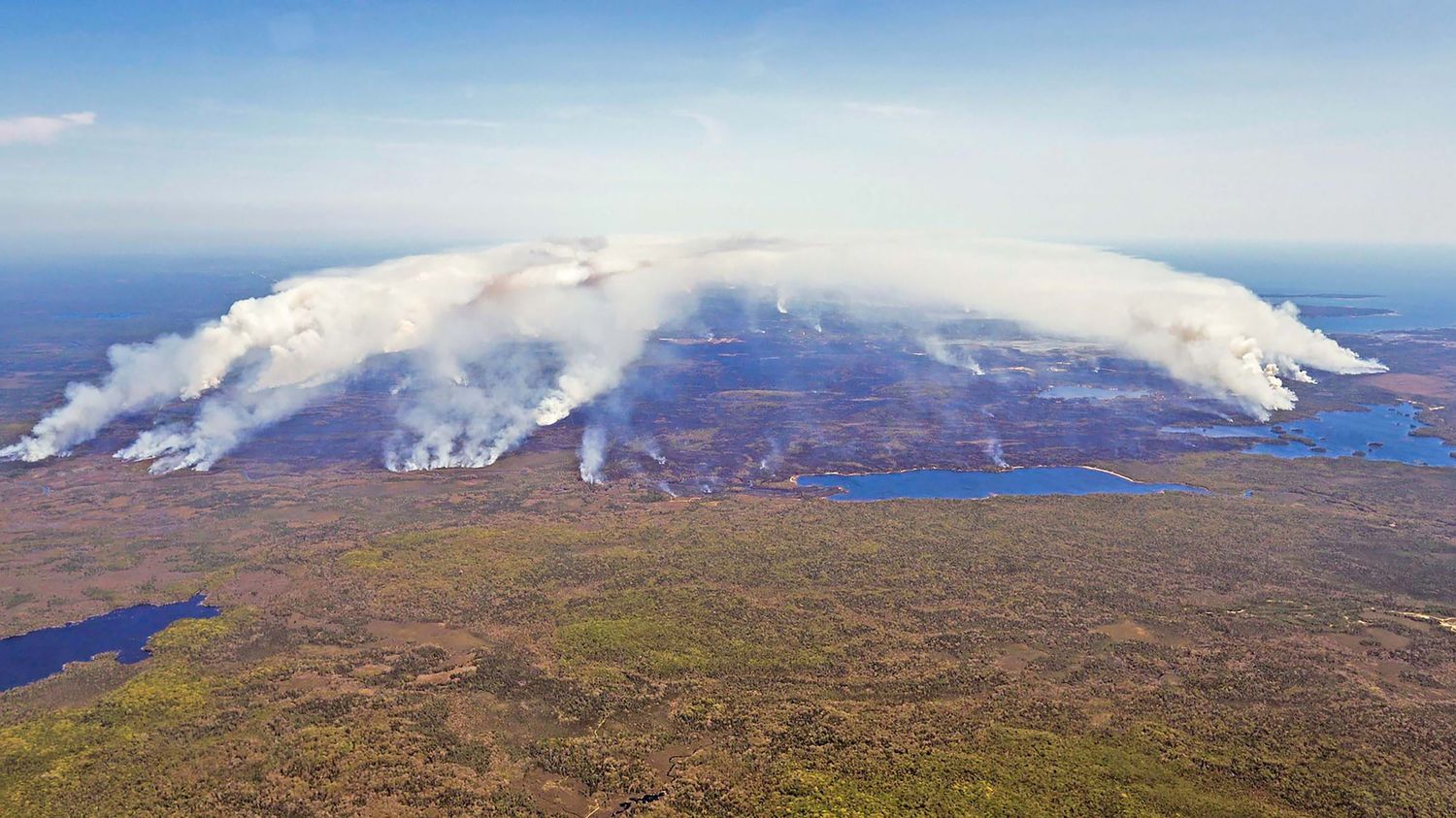After the west of the country, the provinces of Alberta and Saskatchewan, the east of the country is now affected by “unprecedented fires”.
Article written by
Published
Update
Reading time : 1 min.

A total significantly higher than the average of the last three decades. More than 2.7 million hectares have burned this year in Canada, plagued by more than 200 active fires, the country’s authorities announced on Thursday (June 1).
After the west of the country, the provinces of Alberta and Saskatchewan at the beginning of May, the east of the country – in particular Nova Scotia – is now affected by “unprecedented fires”. “These conditions, at this stage of the season, are absolutely unprecedented and obviously cause for concern”, said Bill Blair, Canadian Minister of Public Safety. Currently, 211 wildfires are raging in the country and 82 are out of control, he said.
Smokes on the American East Coast
The arrival of an extreme heat wave and strong winds in the East could lead to a “extreme behavior of fires”, according to firefighters. In Nova Scotia, 16 fires were still active Thursday. One reached the suburbs of the province’s main city, Halifax, and forced authorities to evacuate more than 16,000 people northwest of the city. It now seems partially under control. Another fire, near Lake Barrington, is however particularly scrutinized: it is still out of control after having ravaged 20,000 hectares. This is the largest fire ever recorded in the province.
Smoke from the fires ravaging the province has even reached the Atlantic coast of the United States, causing air pollution peaks in the state of New Jersey and parts of Pennsylvania.
In western Canada, more than 60 fires were still in progress in Alberta, a month after the outbreak of the state of emergency, and about twenty in Saskatchewan. The country, which is warming faster than the rest of the planet, has been confronted in recent years with extreme weather events, the intensity and frequency of which are increased by global warming.
